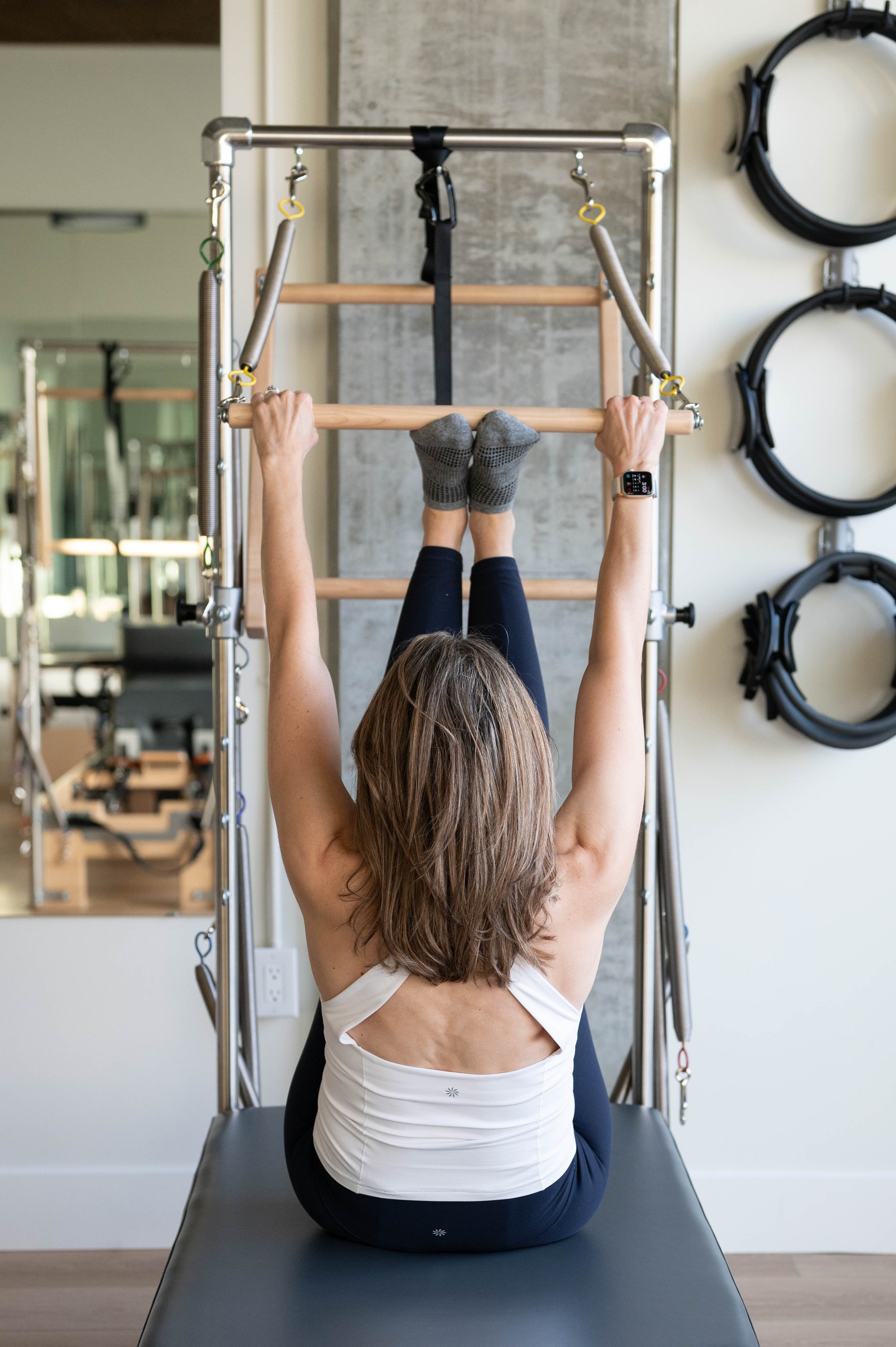Why Pilates is Amazing - Part 2: Awareness & Balance
Image: Erin Girard
Last week we began our journey to find out what Pilates is exactly and why is it so amazing for our bodies. If you missed Part 1: Intro, you can find the article here.
We discovered that Pilates is functional fitness training. Pilates unique method re-trains the functioning of the entire body as exercises are designed to work multiple muscles at once - like real life.
There are a set of 8 principles that we can apply to our Pilates practice:
Awareness (proprioception)
Balanced Muscle Development
Breath
Concentration
Control
Centring
Flowing Motion
Precision
Over the next few weeks we are having fun exploring each principle. Today we are diving into Awareness and Balanced Muscle Development.
AWARENESS & PROPRIOCEPTION
Let's begin with awareness. Without awareness of how our body moves, change cannot occur. We all develop postural misalignments, incorrect movement patterns, and compensations over time. If we are not aware of these, we can't correct them. While we practice our Pilates exercises it's beneficial to notice how our bodies are moving. The cool thing about Pilates is that we often follow a breath pattern, which helps us stay focused during the exercises.
Proprioception is described as our sixth sense, it's the sense of self-movement and body position within space. Proprioception is mediated by our proprioceptors, which are mechanosensory neurons located within our muscles, tendons, and joints. Having strong proproception helps us with balance and correct movement patterns, reducing the risk of injury and falls. We strengthen these proprioceptors every time we purposefully perform our Pilates exercises, as well as, with other modes of deliberate exercise.
What I love about the Pilates method is that the exercises are similar to physiotherapy exercises; building our bodies strong, correcting imbalances, and connecting the right muscles to fire while using the Pilates apparatus (equipment) to move with control and awareness.
BALANCED MUSCLE DEVELOPMENT
Joseph Pilates called this concept uniformed development and it was a huge focus within his entire system. Think symmetry of the body: a balance of stability and mobility. I wrote an article about the kinetic chain here.
Painful musculoskeletal conditions often show patterns of imbalance in our body, meaning one side of our body is stronger/tighter than the other side may be weaker/looser. When this happens certain muscles are recruited excessively while others are underutilized. Often these imbalances are caused by the body using compensatory mechanisms to protect certain areas or try to reduce pain (for example: a pulled groin muscle brings about tight and overworked surrounding inner thigh muscles, leading to less range of motion around the hip joint which could bring about a compensation at the knee, leading to knee pain).
Each person has a unique set of imbalances, and these are almost always related to their previous injuries and/or dysfunctional movement patterns. A properly designed Pilates exercise program brings balance in our muscles safely and gradually as using the Pilates apparatus helps support the body in the correct alignment. Because the loads of resistance are light to medium in Pilates compared to other modes of strength training the risk of injury is quite low. The exercises in Pilates contribute to bring balance, coordination, healthy joint mobility and stability, muscular strength and endurance, and core stability. I truly believe Pilates is one of the BEST ways to train the body. Other strength modalities can be great too (do what you love!), and I often write about all things health and fitness here on this blog, please have a look.
Awareness and Balanced Muscle Development are two very important pieces to explore within the Pilates method. Hope you enjoyed learning more about those concepts! Next week we will explore Breath and Concentration.

